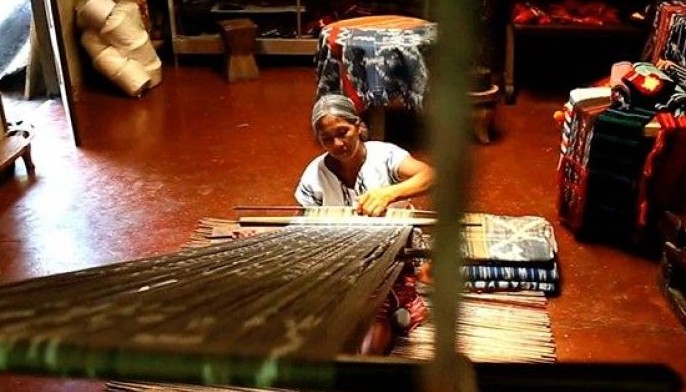Look, Ma, I’m not dancing! (Is ballet really worth it?)
May 27, 2001 | 12:00am
If I hadn’t performed on-stage for 20 years, if I didn’t know the details, particulars and items of the training and fruition of performing the great classics like Swan Lake, Giselle, The Nutcracker, etc., I would be that mother who would see to it that my daughter took ballet lessons at a young age.
I would look up ballet schools and find out it would cost me quite a fortune to have her take those lessons in dance. Never mind. Anything to see her in a tutu, pirouetting away, looking delightful. I would drive her through traffic everyday so that she makes it to rehearsals. I would watch her diet, her sleep, her fatigue. I would sit in the audience and dream of her as Odette, Odile or Giselle… someday… in front… with a prince. Everything is beautiful at the ballet.
After she advances to intermediate class, I will find out she will have to wear pointe shoes. They cost about a thousand pesos nowadays. She can hold on to a pair for several months. That would be fine.
Then she would audition for apprenticeship for a major ballet company and be accepted. My, my, I would hum, my daughter is indeed a ballerina. She will have to rehearse every night and go to school in the morning, exhausted, sleepy, but aching to dance some more.
She will be wearing that white tutu somewhere at the back of the long lines of swans. It will take years for her to progress to soloist but I will be patient. She will be irritable, bulimic, subdued. Why? I would find out much, much later.
An active dancer would spend eight hours a day looking at herself in the mirror and almost never liking what she sees… imperfection. Perfection means arched feet, long legs, a slim pliant body, a beautiful line, high extensions, balance, more than two faultless turns, stamina, strength, grace, beauty. No body is capable of being that or doing that.
She will hear of her colleagues cast in roles she would have loved to have. There will be frustration. She will have bleeding toes, sprained ankles, pulled muscles. She will have sleepless nights thinking of steps she cannot accomplish. She will remember affronts hurled her way by teachers. She will never forget that night she slipped on stage and the nervous laughter of the audience when she fell, or the time she wasn’t in sync with the rest of the cast and was scolded for it. She will get an honorarium of P2,000 a month. I’d have spent more than that for her food and transportation allowance.
One day, she will come home to announce with ecstasy that she has made it as company member. There will be more rehearsals, more hunger, more fatigue, more late hours. She will be receiving a salary of P4,000 a month, P2,500 less than minimum wage.
With a daily schedule that begins at 2 p.m. with ballet class and rehearsals that run until 10 p.m., my daughter will be in the company of dancers most of the time. It won’t be surprising if she fell in love with one of those gorgeous studs with sinewy limbs and powerful muscles. Hopefully it will be the principal male earning P15,000… if she were to marry him later on because, when that happens, they will have to worry about rent, electric, water and phone bills, and gasp, sending their children to primary school.
Because there is very little support from the government and private institutions, the company will be forced to schedule more performances to augment its income. The dancers will ultimately find themselves doing guest appearances in the provinces and flying back to Manila, either to rehearse for an opening of a corporate show in Makati, a book launching in Quezon City, or a special performance in Tondo. These little deviations from the regular schedule of classes and rehearsals frequently cause major and minor injuries to the body. All these I know from my 20 years of experience as a dancer.
What pains me most now, as a spectator, is the fact that today’s dancers usually face an auditorium with only half of the seats occupied. Where are our subscribers in the ’70s and ’80s, our friends and benefactors, our corporate sponsors, I ask. What are Boards of Trustees doing to get people to watch? Are they raising funds for those monthly salaries and costly productions?
I look around and observe that nobody seems to be that interested in watching the full-length Giselle anymore. Not many people are curious to watch a Camille Ordinario in Carmen, a Pamela Asprer in La Fille Mal Gardée, or a Guada de Leon in Don Quixote. These dancers are dancing 10 times better than I ever did in my time and not enough people are watching them!
People may say that ballet is a Western form of art way out of range with Filipino culture, cut off from the issues that riddle our present society. Should we then stop listening to Mozart and Bach and stop appreciating Rembrandt, Picasso, or Cezanne? Whether it be Western, Asian, tribal or contemporary – art is art. It has always been food for the soul and a soul holds no status. I do know that it’s something that needs more nourishment in this very materialistic world. Incidentally, we should also stop listening to rock music and being held hostage by this artificial intelligence called the computer.
When I go to the theater to watch a ballet, my heart throbs. The voltage is so tangible I suffer electric burns. These dazzling performances are not only for artists and the elite. Ballet companies have reached out to the masses with their provincial tours and school lecture-demos. Unmistakably though, it is the elite who can give it the support it needs by doling out money, tax-free. The artists can watch… and pay.
It now costs millions to dress up the CCP Main Theater to produce a full-length ballet like The Nutcracker. It costs roughly P2.5 million to pay 30 dancers a year with monthly salaries ranging from P4,000 to P15,000. How much exhaustion can an artistic director and his staff take from putting in 12 hours a day, seven days a week, 12 months a year, in order to provide a full season of performances, tours, workshops, outreach programs, just to be able to produce those shows and pay those darn salaries?
I have been through all the harshness as well as the richness of being a performer. And in my time, after all that hard work, we did enjoy not only fame but sustenance from an appreciative public. Sad to say, many ballet dancers today are retiring way before their time. They opt to teach, choreograph or do commercial work for a bigger income when they are still so young and at the stage of maturity and technical competence.
If this goes on we miss out on the future Maniya Barredos, Nonoy Froilans, Lisa Macujas, Osias Barrosos, Cecile Sicangcos, Toni Lopes Gonzaleses, Anna Villadolids and Maritoni Rufinos. The younger generation of dancers are all out there teaching ballet to japayukis because it pays them well.
We should not let this art die. In the same way we strive to reconstruct our politics, economy, and social disparities, let us not overlook chow for our hearts and mind.
So why is my daughter not dancing? I’ll tell you why. My father was a dancer, two of my sisters were dancers, my husband was a dancer, and I was a dancer. Tama na. Dance has had its fill of this particular family. I’m sending her to the theater. Only thing is, I heard they’re not doing any better.
I would look up ballet schools and find out it would cost me quite a fortune to have her take those lessons in dance. Never mind. Anything to see her in a tutu, pirouetting away, looking delightful. I would drive her through traffic everyday so that she makes it to rehearsals. I would watch her diet, her sleep, her fatigue. I would sit in the audience and dream of her as Odette, Odile or Giselle… someday… in front… with a prince. Everything is beautiful at the ballet.
After she advances to intermediate class, I will find out she will have to wear pointe shoes. They cost about a thousand pesos nowadays. She can hold on to a pair for several months. That would be fine.
Then she would audition for apprenticeship for a major ballet company and be accepted. My, my, I would hum, my daughter is indeed a ballerina. She will have to rehearse every night and go to school in the morning, exhausted, sleepy, but aching to dance some more.
She will be wearing that white tutu somewhere at the back of the long lines of swans. It will take years for her to progress to soloist but I will be patient. She will be irritable, bulimic, subdued. Why? I would find out much, much later.
An active dancer would spend eight hours a day looking at herself in the mirror and almost never liking what she sees… imperfection. Perfection means arched feet, long legs, a slim pliant body, a beautiful line, high extensions, balance, more than two faultless turns, stamina, strength, grace, beauty. No body is capable of being that or doing that.
She will hear of her colleagues cast in roles she would have loved to have. There will be frustration. She will have bleeding toes, sprained ankles, pulled muscles. She will have sleepless nights thinking of steps she cannot accomplish. She will remember affronts hurled her way by teachers. She will never forget that night she slipped on stage and the nervous laughter of the audience when she fell, or the time she wasn’t in sync with the rest of the cast and was scolded for it. She will get an honorarium of P2,000 a month. I’d have spent more than that for her food and transportation allowance.
One day, she will come home to announce with ecstasy that she has made it as company member. There will be more rehearsals, more hunger, more fatigue, more late hours. She will be receiving a salary of P4,000 a month, P2,500 less than minimum wage.
With a daily schedule that begins at 2 p.m. with ballet class and rehearsals that run until 10 p.m., my daughter will be in the company of dancers most of the time. It won’t be surprising if she fell in love with one of those gorgeous studs with sinewy limbs and powerful muscles. Hopefully it will be the principal male earning P15,000… if she were to marry him later on because, when that happens, they will have to worry about rent, electric, water and phone bills, and gasp, sending their children to primary school.
Because there is very little support from the government and private institutions, the company will be forced to schedule more performances to augment its income. The dancers will ultimately find themselves doing guest appearances in the provinces and flying back to Manila, either to rehearse for an opening of a corporate show in Makati, a book launching in Quezon City, or a special performance in Tondo. These little deviations from the regular schedule of classes and rehearsals frequently cause major and minor injuries to the body. All these I know from my 20 years of experience as a dancer.
What pains me most now, as a spectator, is the fact that today’s dancers usually face an auditorium with only half of the seats occupied. Where are our subscribers in the ’70s and ’80s, our friends and benefactors, our corporate sponsors, I ask. What are Boards of Trustees doing to get people to watch? Are they raising funds for those monthly salaries and costly productions?
I look around and observe that nobody seems to be that interested in watching the full-length Giselle anymore. Not many people are curious to watch a Camille Ordinario in Carmen, a Pamela Asprer in La Fille Mal Gardée, or a Guada de Leon in Don Quixote. These dancers are dancing 10 times better than I ever did in my time and not enough people are watching them!
People may say that ballet is a Western form of art way out of range with Filipino culture, cut off from the issues that riddle our present society. Should we then stop listening to Mozart and Bach and stop appreciating Rembrandt, Picasso, or Cezanne? Whether it be Western, Asian, tribal or contemporary – art is art. It has always been food for the soul and a soul holds no status. I do know that it’s something that needs more nourishment in this very materialistic world. Incidentally, we should also stop listening to rock music and being held hostage by this artificial intelligence called the computer.
When I go to the theater to watch a ballet, my heart throbs. The voltage is so tangible I suffer electric burns. These dazzling performances are not only for artists and the elite. Ballet companies have reached out to the masses with their provincial tours and school lecture-demos. Unmistakably though, it is the elite who can give it the support it needs by doling out money, tax-free. The artists can watch… and pay.
It now costs millions to dress up the CCP Main Theater to produce a full-length ballet like The Nutcracker. It costs roughly P2.5 million to pay 30 dancers a year with monthly salaries ranging from P4,000 to P15,000. How much exhaustion can an artistic director and his staff take from putting in 12 hours a day, seven days a week, 12 months a year, in order to provide a full season of performances, tours, workshops, outreach programs, just to be able to produce those shows and pay those darn salaries?
I have been through all the harshness as well as the richness of being a performer. And in my time, after all that hard work, we did enjoy not only fame but sustenance from an appreciative public. Sad to say, many ballet dancers today are retiring way before their time. They opt to teach, choreograph or do commercial work for a bigger income when they are still so young and at the stage of maturity and technical competence.
If this goes on we miss out on the future Maniya Barredos, Nonoy Froilans, Lisa Macujas, Osias Barrosos, Cecile Sicangcos, Toni Lopes Gonzaleses, Anna Villadolids and Maritoni Rufinos. The younger generation of dancers are all out there teaching ballet to japayukis because it pays them well.
We should not let this art die. In the same way we strive to reconstruct our politics, economy, and social disparities, let us not overlook chow for our hearts and mind.
So why is my daughter not dancing? I’ll tell you why. My father was a dancer, two of my sisters were dancers, my husband was a dancer, and I was a dancer. Tama na. Dance has had its fill of this particular family. I’m sending her to the theater. Only thing is, I heard they’re not doing any better.
BrandSpace Articles
<
>



















